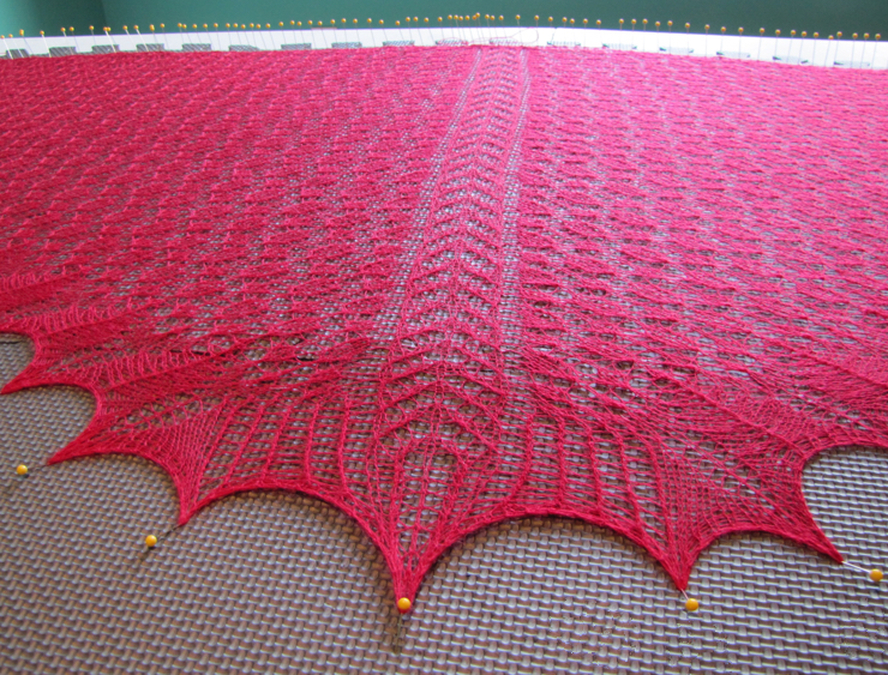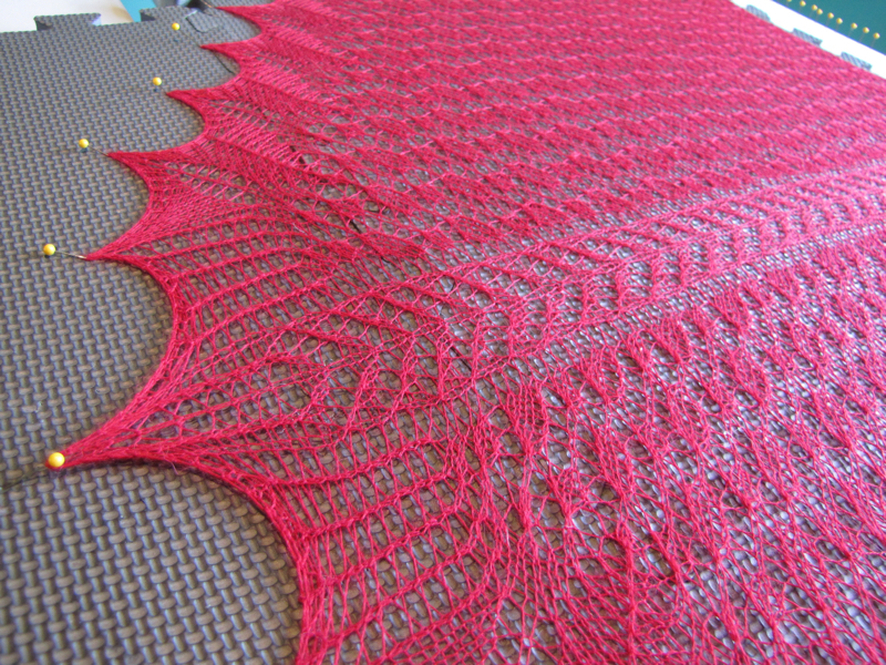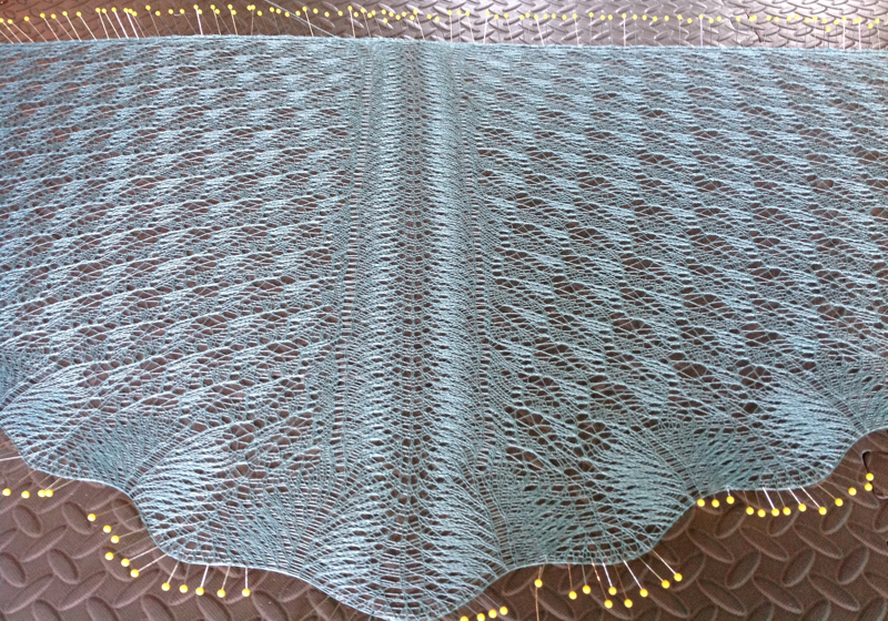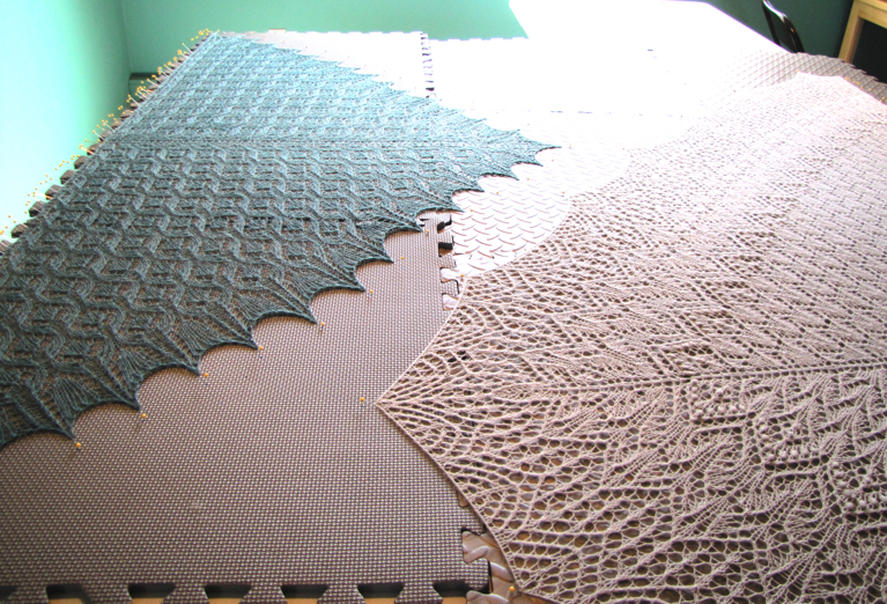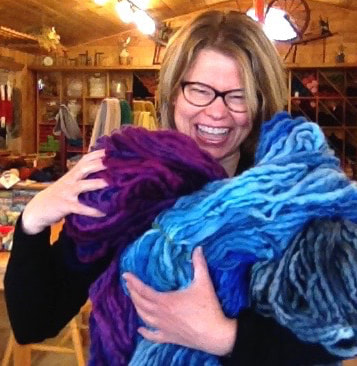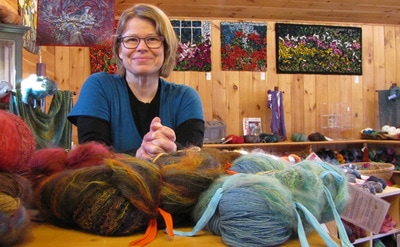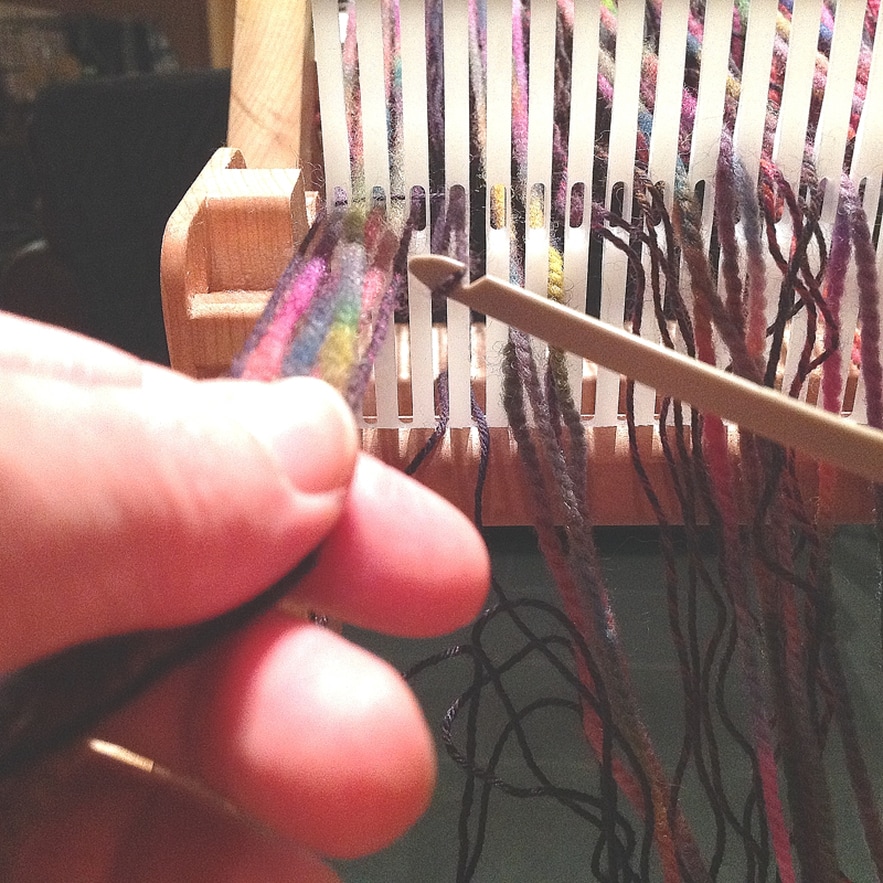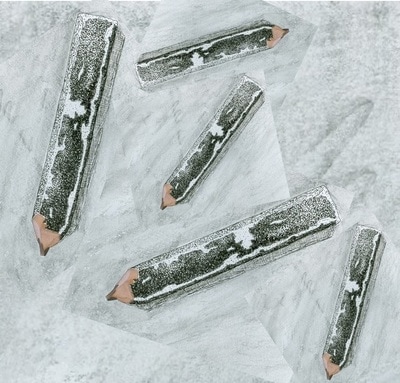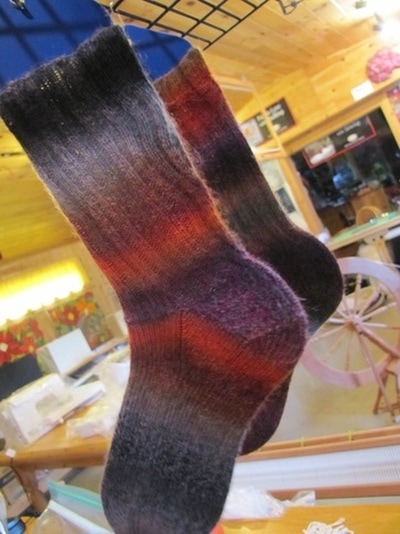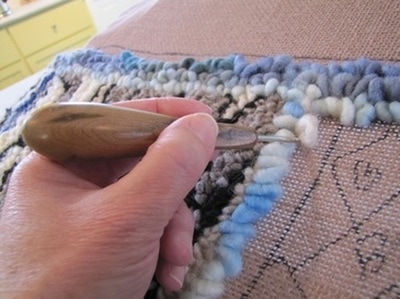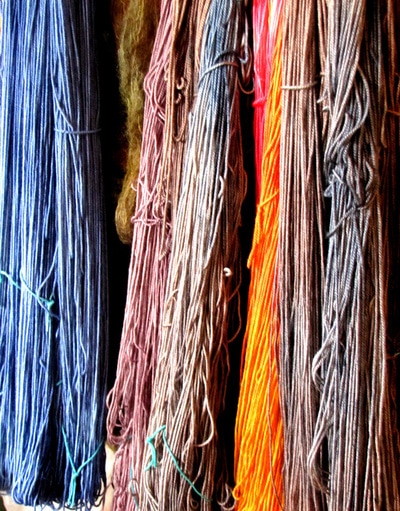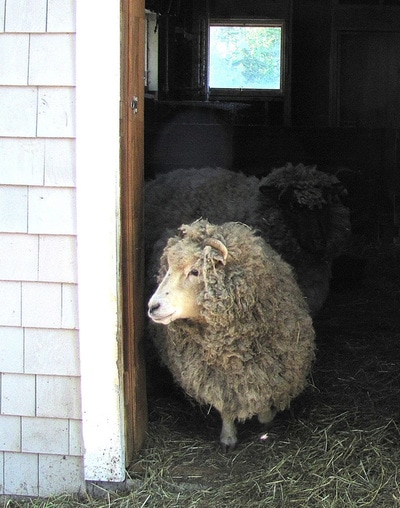|
Well y'all know I love a lace knit -all the way from inspiration to the Grand finale. Of course you're never truly finished with lace until it's been blocked and this last step can be daunting (at least it was for me when I started with lace). So here are a few points that demystified lace blocking for me. These steps won't describe the only way to block your lace knitting but they work well in my world and maybe you'll find them helpful as well. For the purpose of this exercise lets consider a lace knit wool shawl. 1. Wet your shawl. In order I a)fill a bucket with warm (almost hot) water b) add about a teaspoon or so of no-rinse wool wash c) gently submerge the knitting d) walk away for 10-20 minutes. 2. Dry your shawl. This is not so much drying as removing excess water. I wrap the knitting in a white (avoid colour transferring to your shawl) terri cloth towel and gently squeeze the bundle once or twice. Easy peasy! 3. Lay your shawl on a blocking mat. Foam mats that click together are perfect for this job. Be sure to give yourself plenty of space as your knitting is going to expand in blocking. The mats that I'm using in the following photos can be purchased at your local hardware store. I've seen people blocking their work on a bed mattress which also works well. 4. Pin along the straight lines of your shawl. I always start by pinning along the straight wing span of the knitting. This tells me if I have set up with enough space to fully extend the shawl. Use the straight grid of your blocking mats or a large quilting ruler as a guide to keep straight edges. I start by pinning every 4 inches or so and then fill in to pin about every 1/2 inch along these edges. *It's really important that you choose good quality pins to work with. I use Clover rust-proof straight pins, and lots of them! 5. Pin shawl Points. Here's where things get really fun. As you stretch your shawl to block the remainder of it's body, extend any points that you'd like to feature in the final project. This is where picots, points and curves make themselves known while the body of your shawl is stretched to reveal all of your beautiful lace work. These techniques work particularly well with wool and wool/silk blends. You may also like to try using blocking wires though I have found them to be somewhat restricting in terms of oversized and curved pieces. What are your favourite blocking tips and tricks? DOVER CASTLE (teal) and FIREBIRD
2 Comments
Media Briston
12/16/2017 08:47:17 pm
Excellent tutorial! Is this wet blocking method recommended for your chevron cowl scarves as well? I've never blocked before and don't want to ruin the beautiful merino wool scarf.
Reply
Heidi
7/27/2018 04:17:44 pm
You can block the cowl this way for sure. You'll need less stretch on the yarn (laying flat will be fine) and fewer, if any, pins (I like to add pins to every block party:).
Reply
Your comment will be posted after it is approved.
Leave a Reply. |
WELCOME
Everyday I try to find a little something that makes life interesting. A good book, a wagging dog, a cool breeze, tea with a friend. Here are my field notes about making, discovering, and enjoying a simple, slow, handmade life. Thanks so much for visiting. I appreciate your spending time with me. xo Heidi 
STITCHER, MAKER, DREAMER, BOOK REVIEWS summer 2016 Archives
July 2020
|

